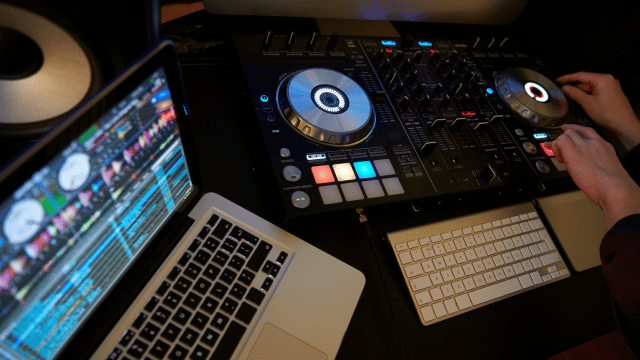I’ve always been captivated by the process of making my own music since I love listening to it. Software for producing music used to be very costly, making it unaffordable for many budding artists. But thanks to the quick development of technology, there are now a ton of free music production software options that are on par with those that cost money.
Digital audio workstations (DAWs), another name for music production software, are devices that let musicians write, record, mix, and master their own music. With the help of these software tools, musicians may unleash their creativity and create tracks of professional quality thanks to their extensive feature set. Using the correct software for music production can significantly impact your musical journey, regardless of your level of experience.
The Importance of Using Free Software
Why use free music creation software when there are costly alternatives available, one may ask. Well, cost and accessibility hold the key to the solution. Whatever their budget, aspiring musicians have access to a world of opportunities with free music production software. They can play around with various sounds, styles, and genres without going over budget thanks to it.
Furthermore, a thriving user community is frequently included with free software, providing a platform for artists to interact, work together, and share knowledge. For novices wishing to advance their abilities and expertise in music creation, the assistance and resources offered by these groups can be quite helpful. Using the appropriate free music production software, anyone can explore the realm of music production and convey their creative ideas.
Key Features to Look for in Music Production Software
When exploring free music production software options, it is essential to consider certain key features that can enhance your music-making experience. These features can vary depending on your specific needs and preferences, but here are some important aspects to consider:
1. User Interface and Workflow
A user-friendly interface and intuitive workflow are crucial in music production software. Look for software that allows you to navigate easily, organize your tracks, and access various tools without feeling overwhelmed. A clean and well-designed interface can greatly enhance your productivity and creativity.
2. MIDI Editing and Virtual Instruments
MIDI editing capabilities are essential for manipulating and arranging your musical ideas. Ensure that the software you choose provides comprehensive MIDI editing features, such as quantization, note editing, and automation. Additionally, having a wide range of high-quality virtual instruments can elevate your compositions and give you access to diverse sounds.
3. Audio Recording and Editing
If you plan on recording vocals or live instruments, make sure the software offers reliable audio recording capabilities. Look for features like multi-track recording, real-time effects processing, and audio editing tools. These features will empower you to capture and refine your performances with precision.
4. Mixing and Mastering Tools
A good music production software should provide a robust set of mixing and mastering tools. These tools allow you to balance and enhance the different elements of your tracks, ensuring a polished and professional sound. Look for features like EQ, compression, reverb, and mastering plugins to achieve the desired sonic quality.
5. Plugin Support and Compatibility
Plugins can greatly expand the capabilities of your music production software. Ensure that the software supports a wide range of plugins, both free and paid, to customize your sound and add unique effects. Compatibility with industry-standard plugin formats like VST, AU, and AAX is also essential for seamless integration into your workflow.
Top Free Music Production Software in 2024
Now that we have discussed the importance of free music production software and the key features to consider, let’s explore some of the top options available in 2024. These software choices have consistently proven their worth and have gained popularity among musicians worldwide.
1. Ardour
Ardour is a powerful and versatile digital audio workstation that offers a comprehensive set of features for music production. It supports multi-track recording, MIDI sequencing, and non-destructive editing. With its professional-grade mixing and routing capabilities, Ardour is suitable for both beginners and advanced users. It is compatible with Windows, macOS, and Linux, making it accessible to a wide range of musicians.
2. Tracktion T7
Tracktion T7 is a user-friendly and feature-rich music production software ideal for beginners. It boasts an intuitive single-screen interface, making it easy to navigate and experiment with different sounds. T7 offers unlimited audio and MIDI tracks, as well as a wide range of built-in effects and virtual instruments. It is available for Windows, macOS, and Linux, ensuring compatibility across various operating systems.
3. Cakewalk by BandLab
Cakewalk by BandLab is a free digital audio workstation with professional-grade features and a sleek interface. It offers a range of creative tools, including a robust MIDI editor, virtual instruments, and advanced mixing capabilities. Cakewalk also supports third-party plugins, expanding its functionality even further. It is compatible with Windows and provides a seamless workflow for musicians of all levels.
4. LMMS
LMMS (Linux MultiMedia Studio) is an open-source music production software that is available for multiple platforms, including Windows, macOS, and Linux. It offers a wide range of features, including a built-in MIDI editor, virtual instruments, and a variety of effects. LMMS also supports plugin integration, allowing users to enhance their sound using third-party plugins. Its user-friendly interface and extensive documentation make it a popular choice for beginners.
5. GarageBand
GarageBand, developed by Apple, is a free music production software exclusively available for macOS and iOS. It offers a user-friendly interface and a vast collection of virtual instruments and loops. GarageBand is an excellent choice for beginners and musicians who want to create music on their Mac computers or iOS devices. With its seamless integration with other Apple software and hardware, GarageBand provides a smooth and intuitive music-making experience.
Comparison of the Top Free Music Production Software Options
To help you make an informed decision, let’s compare the top free music production software options based on their key features and suitability for different user levels.
| Software | User Interface | MIDI Editing | Audio Recording | Mixing Tools | Plugin Support | Compatibility |
|---|---|---|---|---|---|---|
| Ardour | Intuitive | Comprehensive | Yes | Yes | Yes | Windows, macOS, Linux |
| Tracktion T7 | User-friendly | Limited | Yes | Yes | Yes | Windows, macOS, Linux |
| Cakewalk by BandLab | Sleek | Advanced | Yes | Yes | Yes | Windows |
| LMMS | User-friendly | Basic | Yes | Yes | Yes | Windows, macOS, Linux |
| GarageBand | User-friendly | Basic | Yes | Yes | Limited | macOS, iOS |
How to Choose the Best Software for Your Needs
Selecting the best music production software for your needs can be a daunting task, considering the plethora of options available. To make an informed decision, consider the following factors:
1. Skill Level and Experience
Consider your skill level and experience in music production. If you are a beginner, opting for user-friendly software with comprehensive documentation and tutorials can help you get started quickly. On the other hand, if you are an advanced user, look for software that provides advanced features and customization options.
2. Specific Requirements
Identify your specific requirements and goals in music production. Do you primarily work with MIDI or live instruments? Do you need robust mixing and mastering tools? Understanding your requirements will help you prioritize the features you need in your software.
3. Compatibility
Ensure that the software you choose is compatible with your operating system and hardware. Some software options are limited to specific platforms, so it is crucial to check compatibility before making a decision.
4. Community and Support
Consider the availability of a vibrant community and reliable support for the software you choose. Being part of a community can provide valuable resources, tutorials, and opportunities for collaboration.
Tips for Getting Started with Music Production Using Free Software
Now that you have chosen the best free music production software for your needs, here are some tips to help you get started:
- Familiarize yourself with the software’s interface and workflow by exploring tutorials and documentation.
- Experiment with different sounds, virtual instruments, and effects to find your unique style.
- Utilize the MIDI editing capabilities to create intricate melodies and arrangements.
- Take advantage of the software’s mixing and mastering tools to polish your tracks to perfection.
- Join online communities and forums to connect with fellow musicians, share your work, and receive feedback.
- Practice regularly and keep pushing yourself to learn and improve your music production skills.
Resources for Learning and Improving Your Music Production Skills
To enhance your music production skills and expand your knowledge, there are several resources available online. Here are a few recommended platforms:
YouTube: YouTube hosts a plethora of tutorials, walkthroughs, and demonstrations on various music production techniques and software.
Online Courses: Platforms like Udemy, Coursera, and Skillshare offer comprehensive online courses on music production, ranging from beginner to advanced levels.
Forums and Communities: Joining music production forums and communities, such as Reddit’s r/WeAreTheMusicMakers, can provide valuable insights, feedback, and collaboration opportunities.


